
Garelli
Garelli "works." |
Garelli replicas. |
Garelli "works".Agrati sales in Britain wanted a sporting image for their line of Garelli mopeds, and a contact was made to Dutchman Theo Meurs. This arrangement resulted in some fast bikes which dominated the British championship. Later a racekit was offered, to turn the moped into a club racer. |
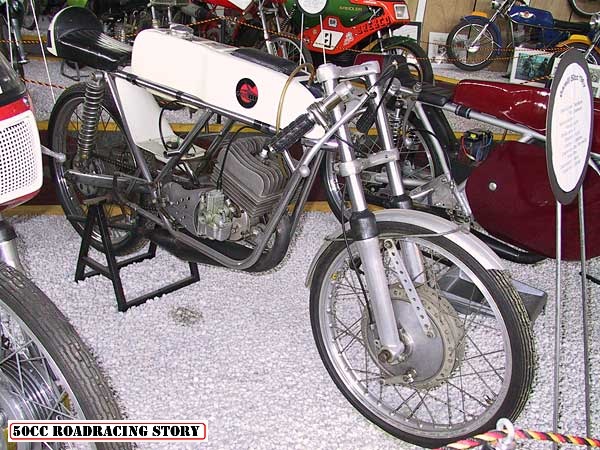 |
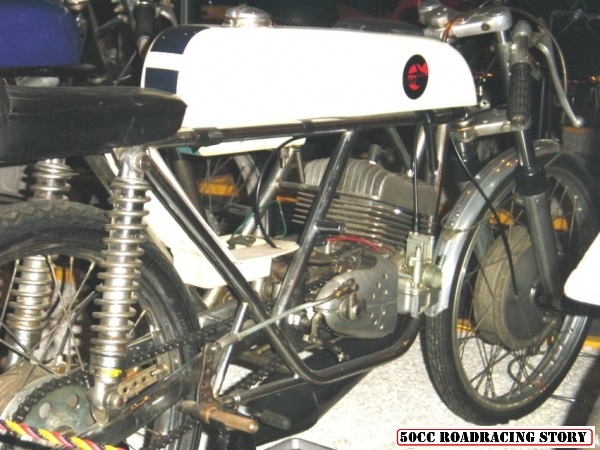 |
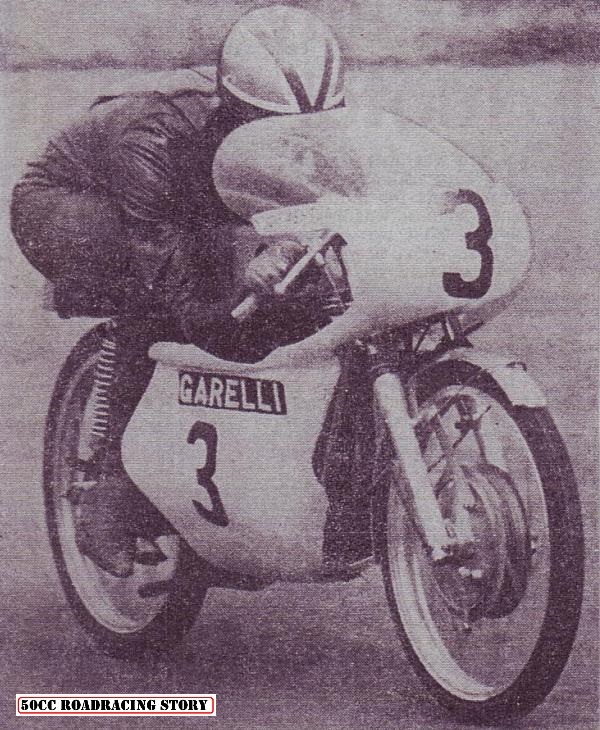 |
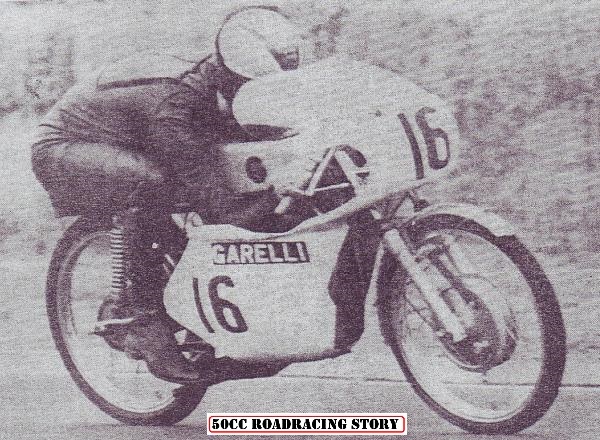 |
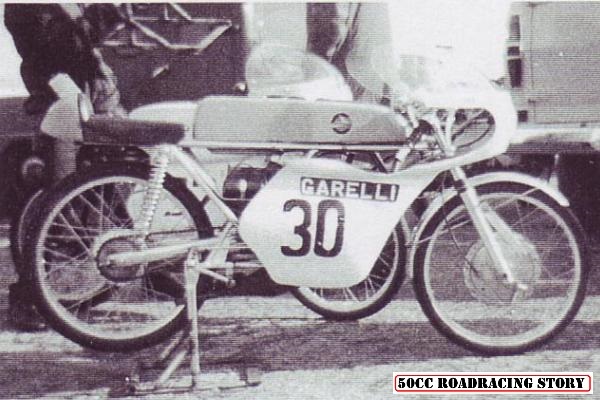 |
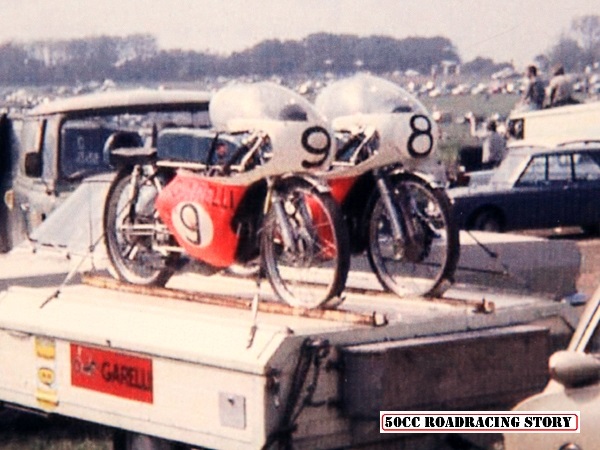 |
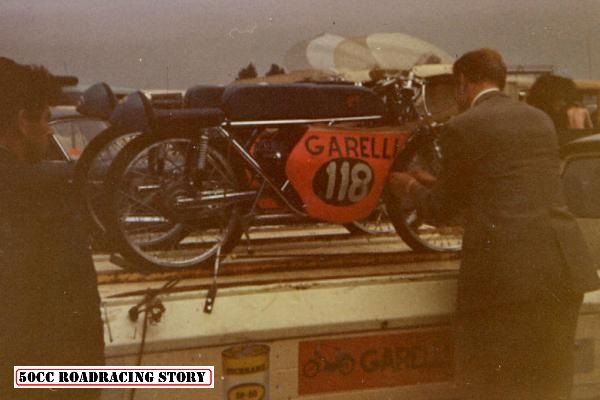 |
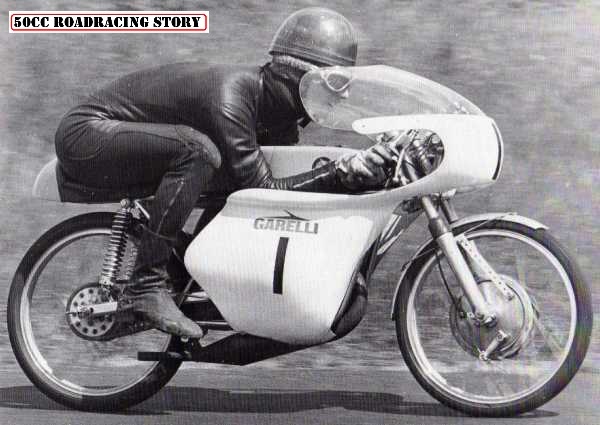 |
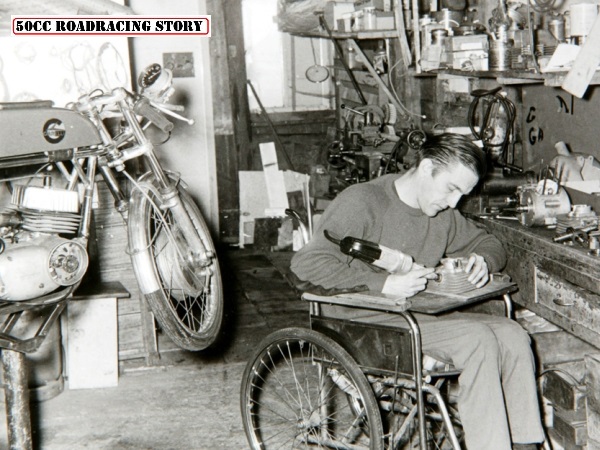 |
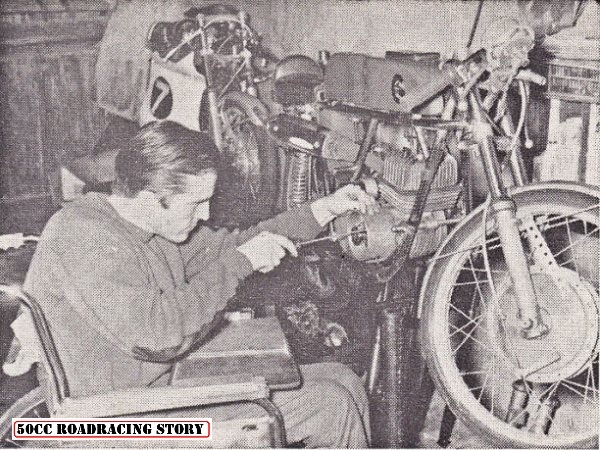 |
|
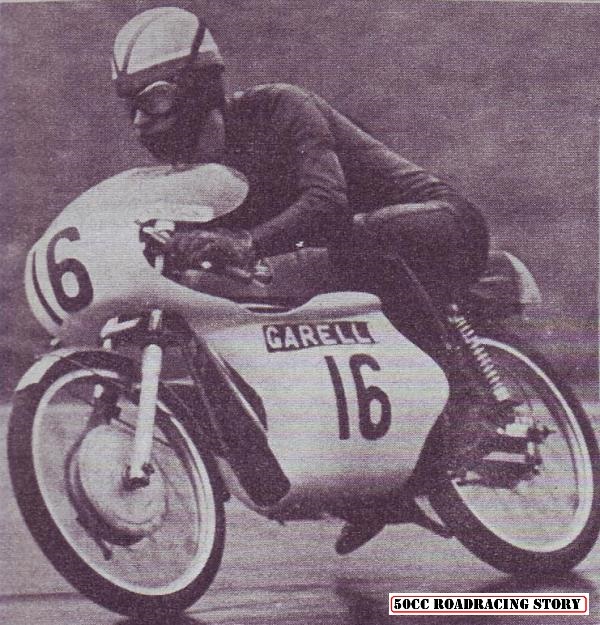 |
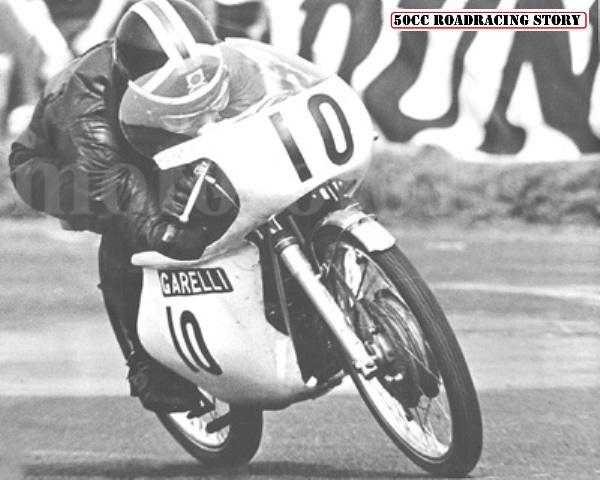 |
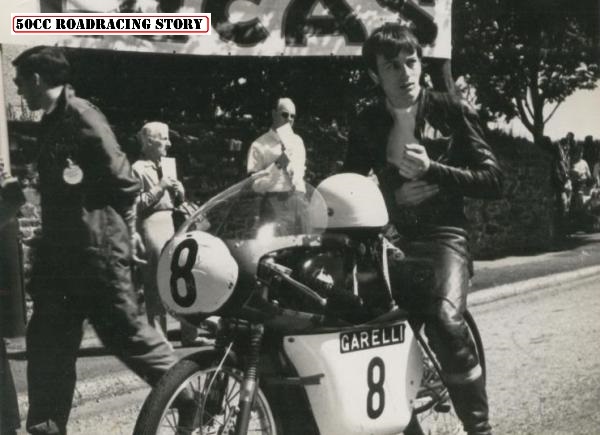 |
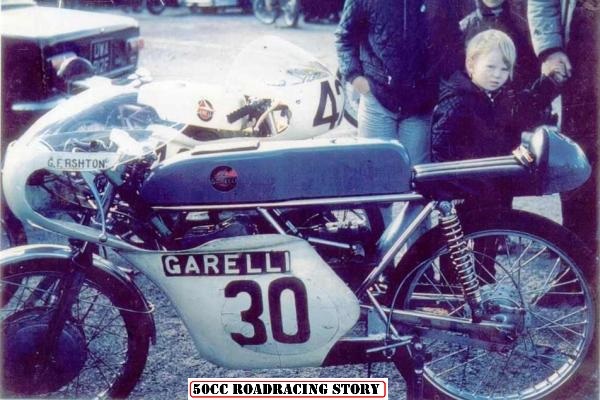 |
 |
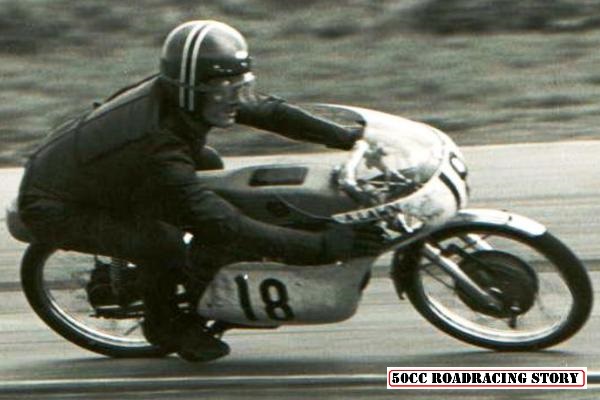 |
| "In 1971 I was invited by Garelli Agrati uk to try the Dutch developed Theo Meurs machine which had previously been raced by George Ashton.I duly crashed it in my first outing at Cadwell Park much to my embarrasment but the mechanics did a quick repair job and I duly won the next 50cc race on that day. The Honda was duly retired and I then spent two successfull years racing the Garrelli with Agrati support untill my own retirement from racing in 1972." Arthur Lawn 2007 | |
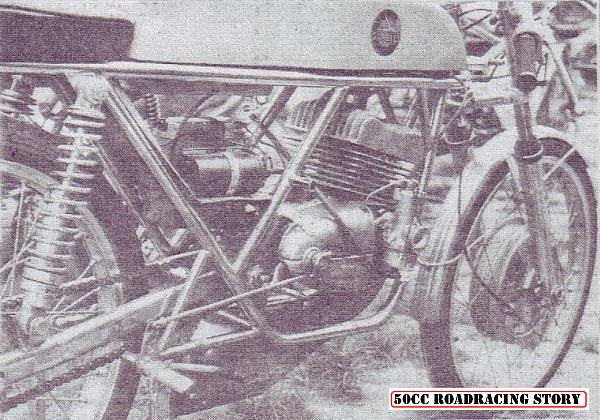 |
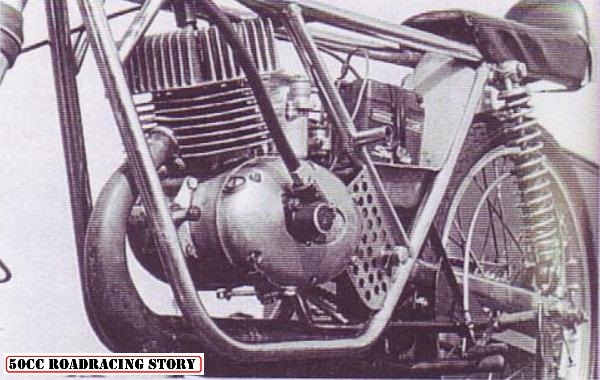 |
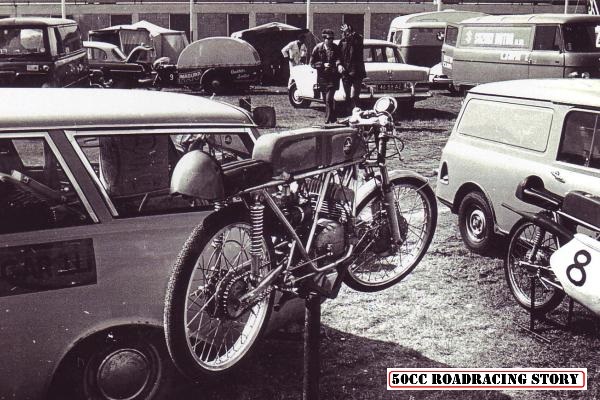 |
 |
 |
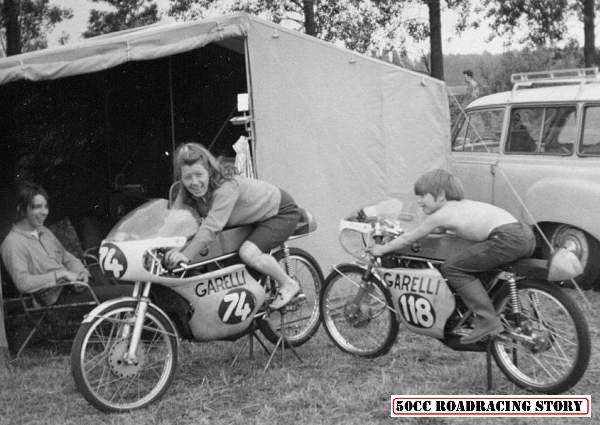 |
 |
|
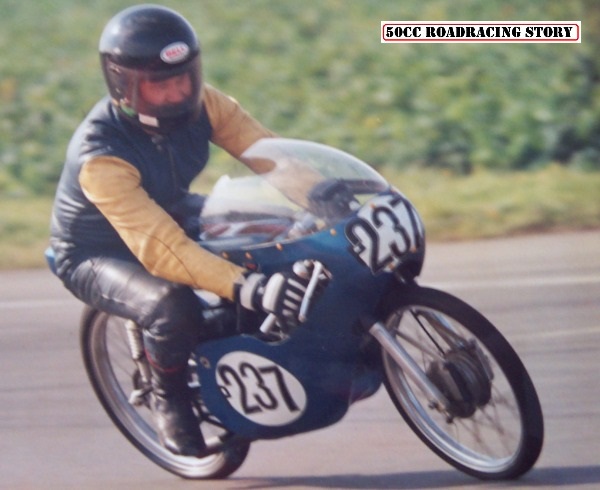 |
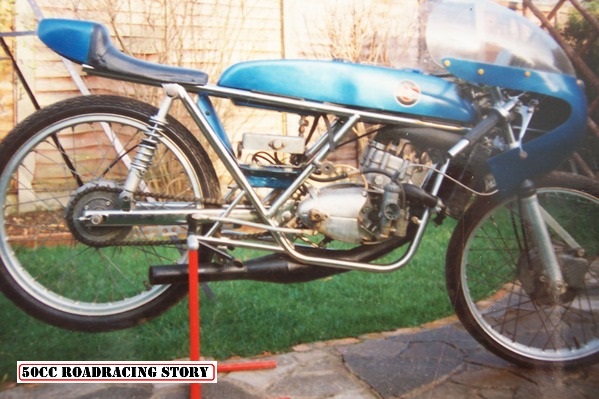 |
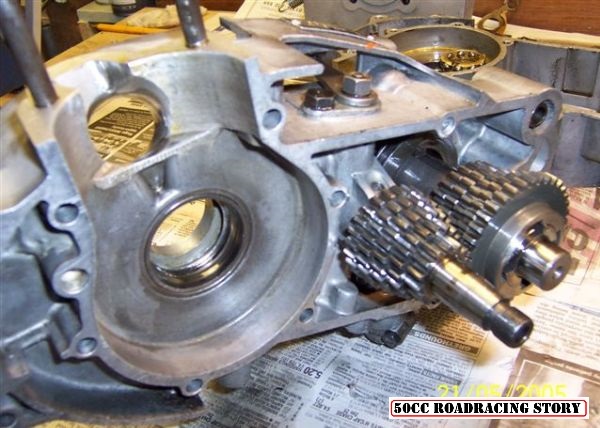 |
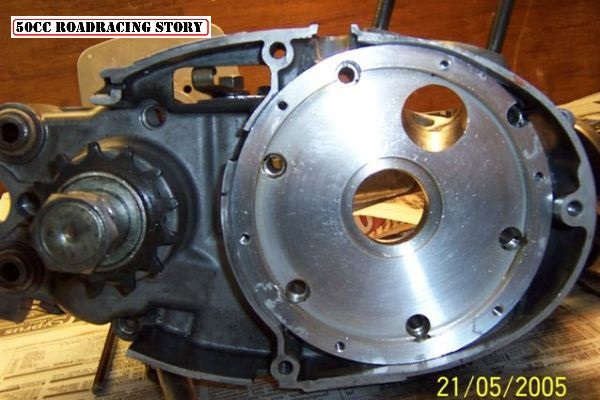 |
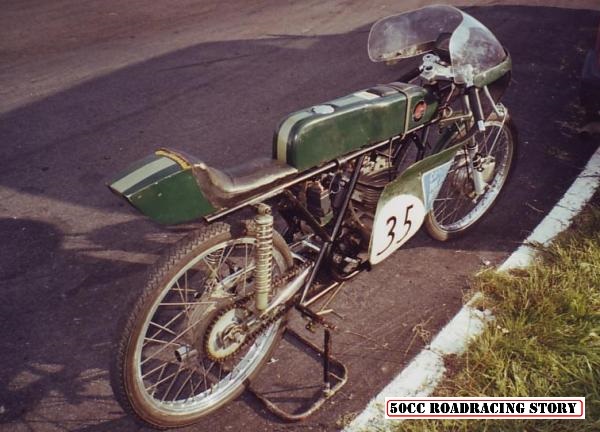 |
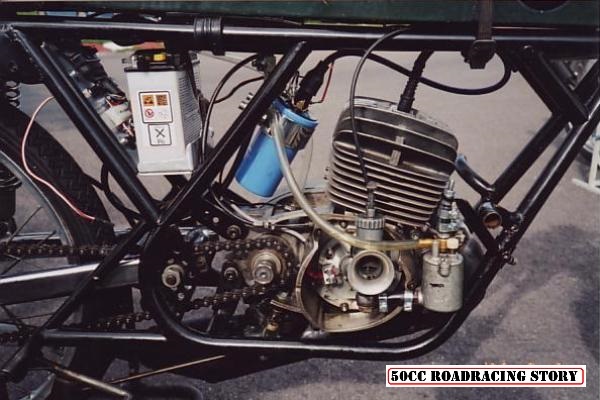 |
 |
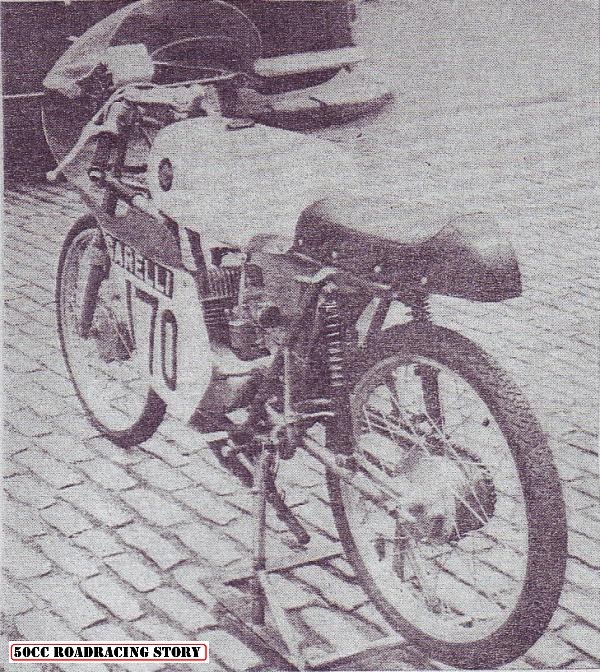 |
When Garelli early eighties decided to enter the 50cc- class, the result were an aluminum- monocoque carrying an engine designed in- house by Ing. Mariani. Sand casted engine had at first an unusual side- exiting exhaust, but it was later exchanged for "normal" type. The Mariani- engine didn´t see further development, when Jan Thiel entered the building, brin- ging his race- winning design! Jan Thiel on Garelli: "In 1980 I was working in Bologna, for Minarelli, when Eugenio Lazzarini came to me, asking if I was interested in working for Garelli to make a new 50cc. I had a contract with Mina- relli for 2 years, so I could not go away and anyway, I was not much interested as I was working for Angel Nieto who was a good friend of mine, and still is. Garelli then contracted two Italian engineers, one of them was named Mariani, to make this new 50cc. They made an engine with a side exhaust, but it never went well and always broke down, I was later told, they did not manage to complete even one lap of the Monza circuit. I don`t know exactly why, because I have never seen the engine nor have I ever spoken to Mariani. The complete rolling chassis was made by Lazzarini in Pesaro". |
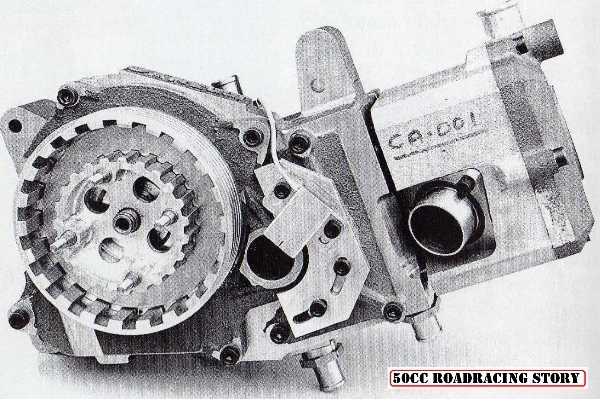 |
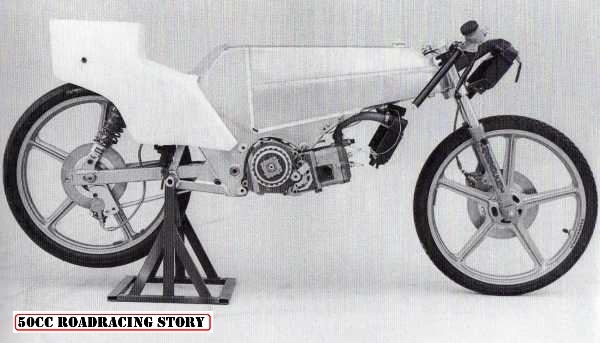 |
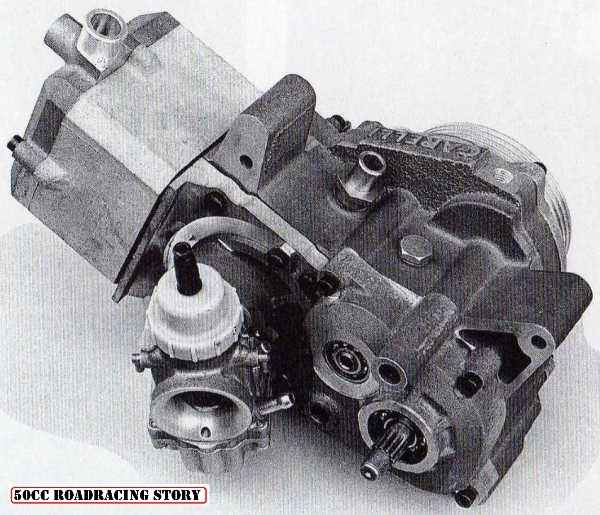 |
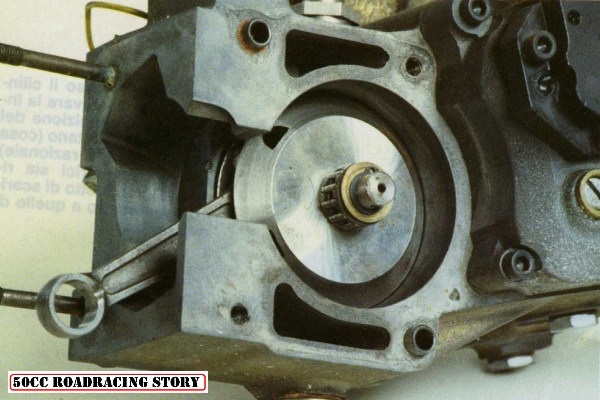 |
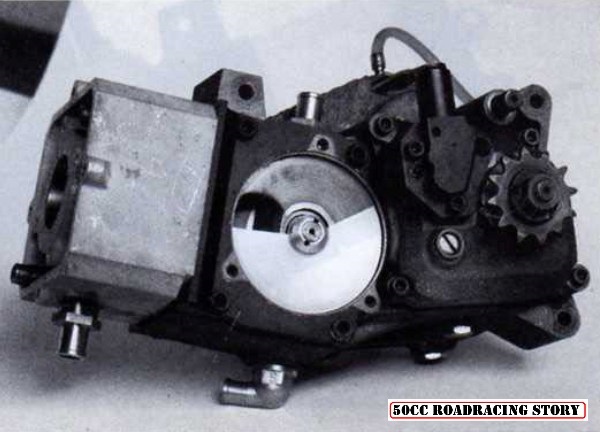 |
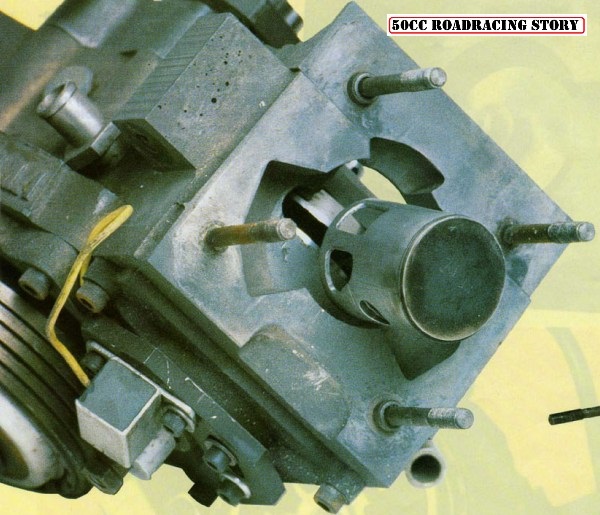 |
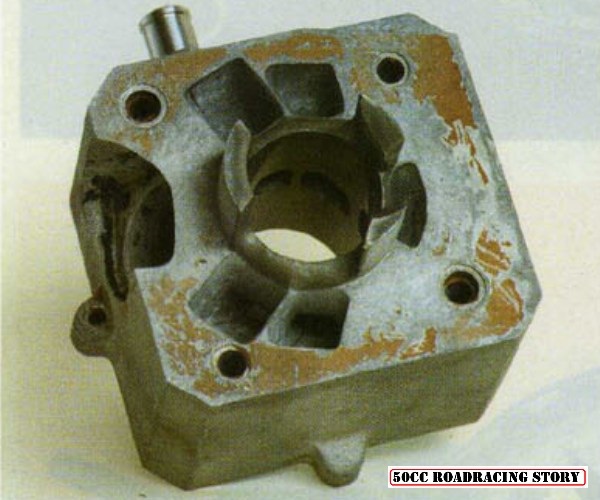 |
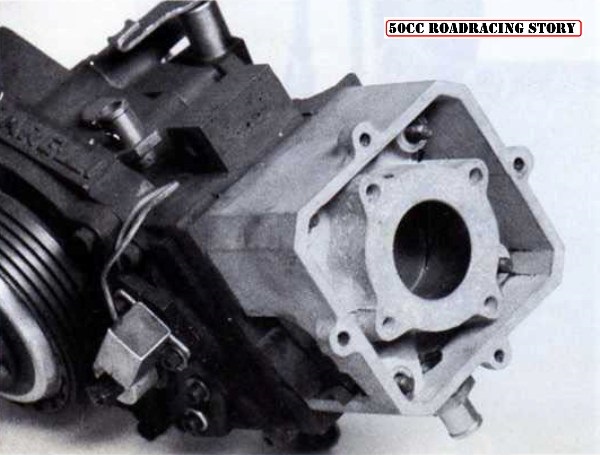 |
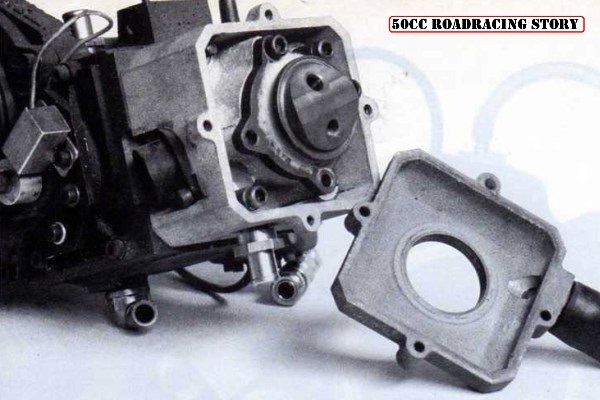 |
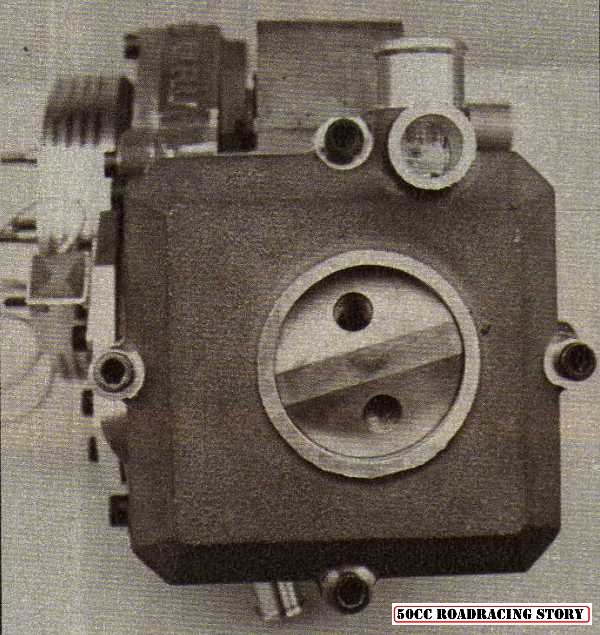 |
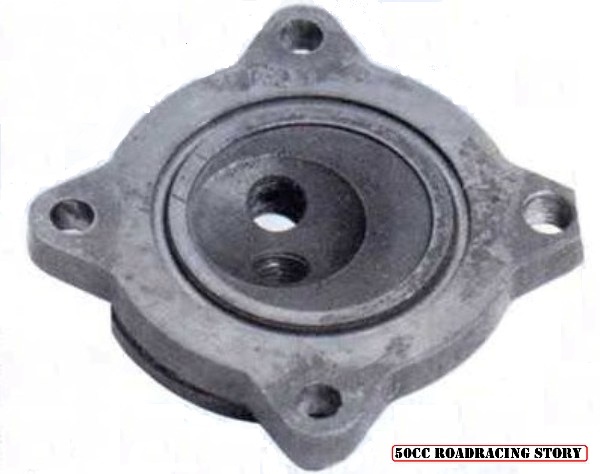 |
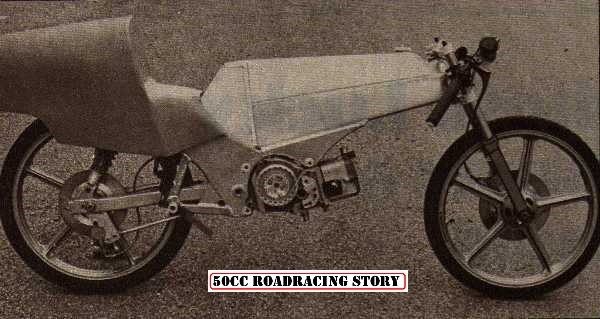 |
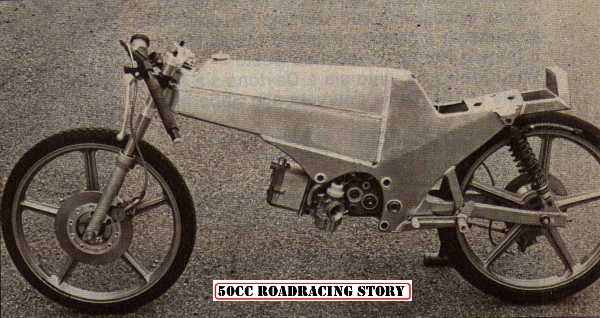 |
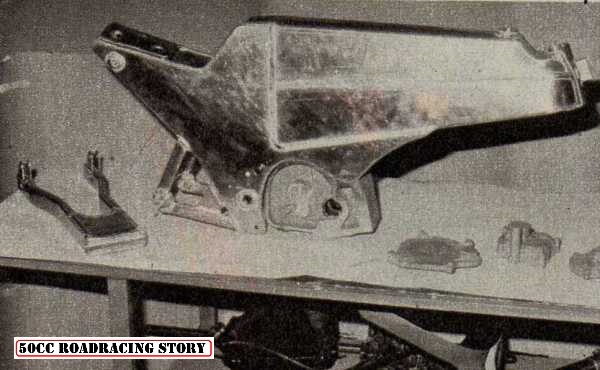 |
 |
| "The collaboration with Mariani came to an end and ended even in tribunal. Lazzarini then thought that the solution would be to make an engine out of solid material using Kreidler inner parts, he had won two world championships with Kreidler engines and he knew that the original crankcases were too weak and cracking sometimes and bearings coming loose. At the end of 1981 Minarelli sold their racing department to Garelli and I was asked to join Garelli which I did. The deal could also include the 50cc Minarelli if I wanted, the choice was up to me. But the Minarelli engine had the rotary valve on the side of the primary drive so you had to take off the clutch and primary cover when experimenting with valve timing, which I did'nt like so much. For the rest it was a good engine, giving 21 HP." |
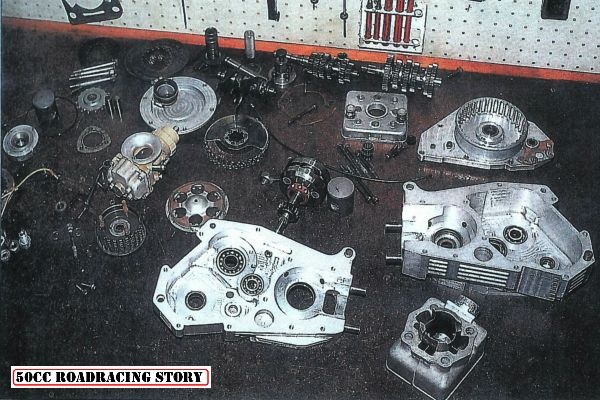 |
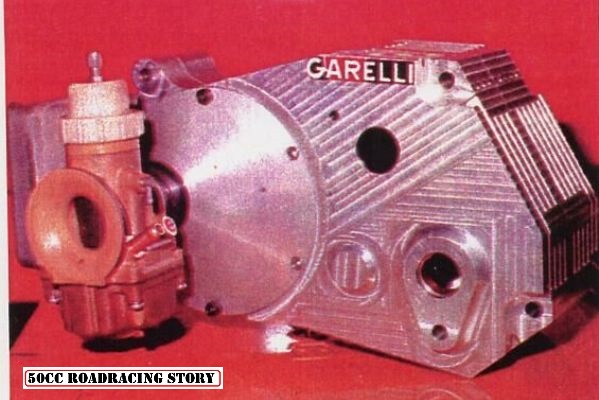
|
"At Garelli they had already done about 50% of the work on the crankcases for 2 engines. I would have liked to make a completely new engine but there was not time enough, it was already january 1982 with the first 50cc race at the beginning of may, and we also had to prepare the 125's for their first race in Argentina, in march. And we had to prepare the Garelli racing department in Milan and find the mechanics. So there was a lot to do and little time. I proposed to prepare the 125's in the Minarelli racing department, working with the Minarelli mechanics who of course knew the bikes very well. Garelli would find some mechanics who also came as soon as possible to Bologna to help with the work. The cilinders for the 50cc Garelli were made at Bologna using a mix of Minarelli casting moulds. The 125's were sent to Argentina from Bologna and after the race retuned to Milan where they had prepared our workshop in the meantime." |
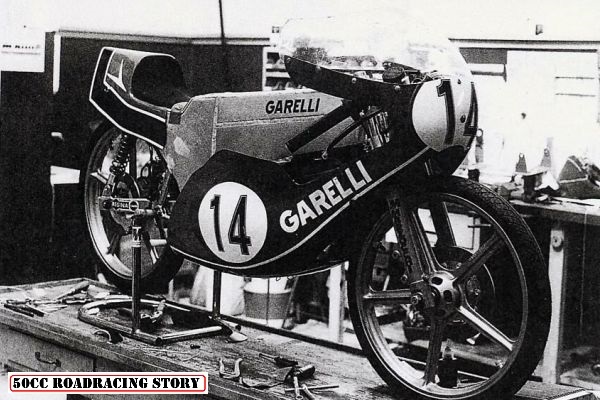 |
|
| "We won in Argentina, so Garelli won their first ever GP, a good beginning. I had decided to use the Garelli crankcases which I modified a bit, I had my own crankshafts made by Hoeckle in Germany and some different gear ratios made by Cima in Italy. The engine ran for the first time on the dyno one week before the first 50cc GP at Jarama. When the mechanics were finished preparing the 125's for Jarama they thought they could go home but I asked them to stay to finish the 50. We worked all through the night and until 10 o'clock the next morning until the bike was finished, started the engine, checked that everything worked and put it in the truck, so the bike went to Madrid without any test- ing at all. In Madrid we came in second which made the Garelli people very happy! The second 50cc race was the week after Madrid. I was thinking the frame/fuel tank was a bit high and the fuel capacity too big. So we decided to make it lower, and we also deci- ded to make a new, lower and narrower fairing. One of the mechanics, Elio Bagnoli, was very good at sheet metal working and he made a new fairing out of pieces of the old fairing and steel plate in about two days. Then a mould was made by a specialist firm and from that they made the new fairing which was finished on thursday evening. So friday morning we were at Misano with a better bike." |
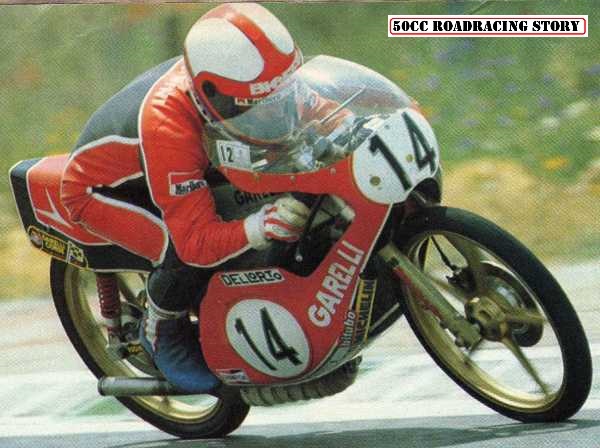 |
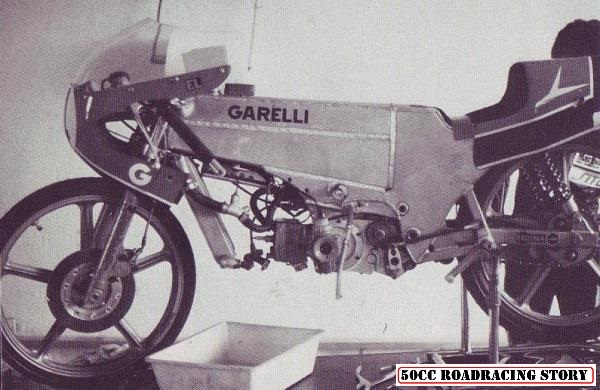 |
"We also had to prepare the 125's of course, so there was no time to work on the engine, we only changed the connecting rod and I discovered that, in Madrid, the big end cage had broken. So we had been very lucky to finish there! In the race Lazzarini was first and going away from second placed Doerflinger, but this time we were not so lucky and the big end seized halfway through the race." |
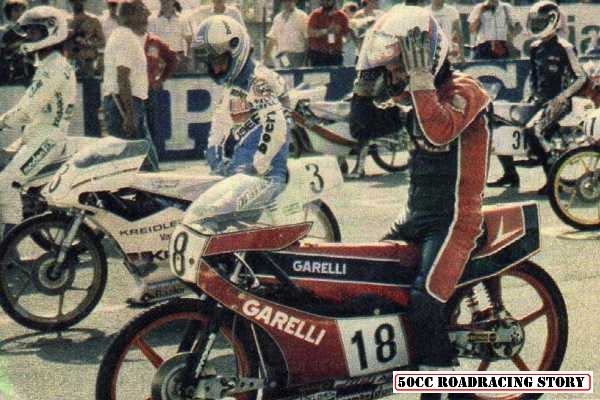 |
|
| "To resolve this problem we changed from FAG to INA bearings and after that had no more problems. The next race was at Assen where we were second behind Doerflinger, I think we had some detonation problems there. After that there were 3 more races in 1982 which we all won. So Lazzarini and Doerflinger each won three races out of six but Doerflinger had three second places against our two, the Misano retirement cost us the world title." |
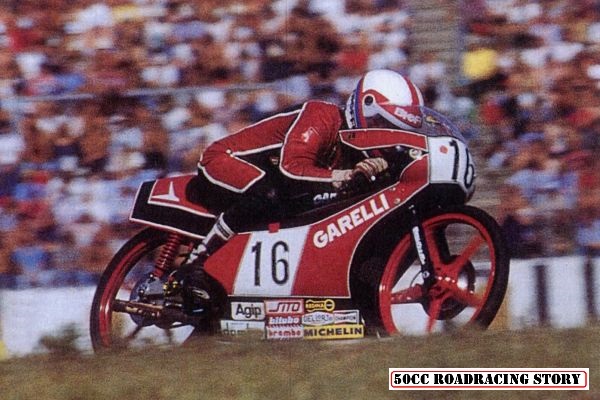 |
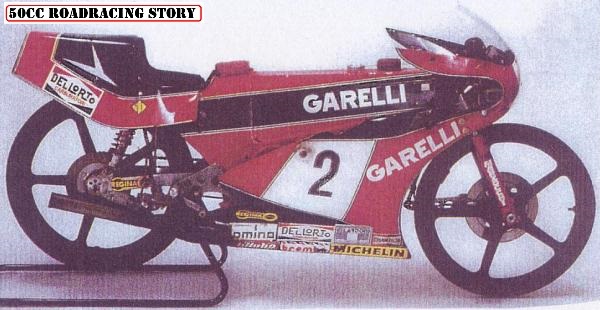 |
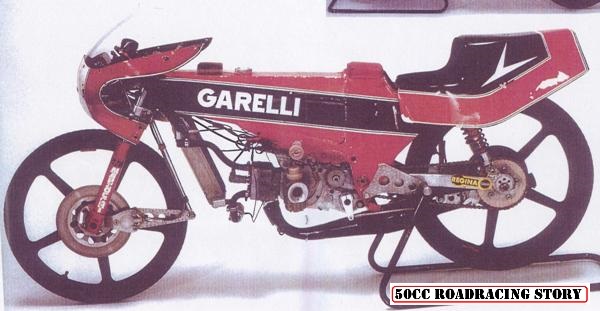 |
 |
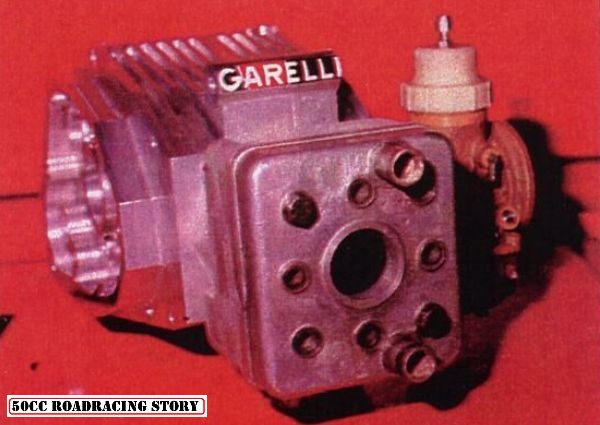 |
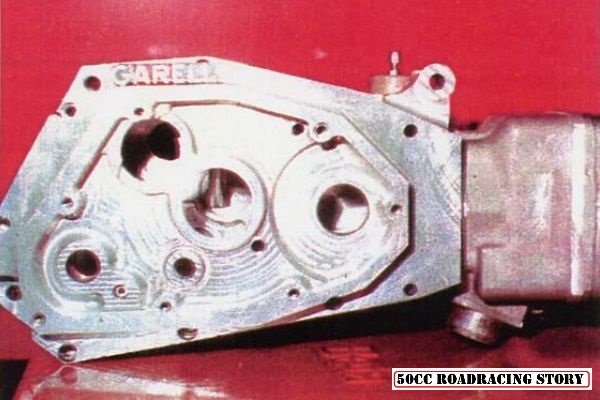 |
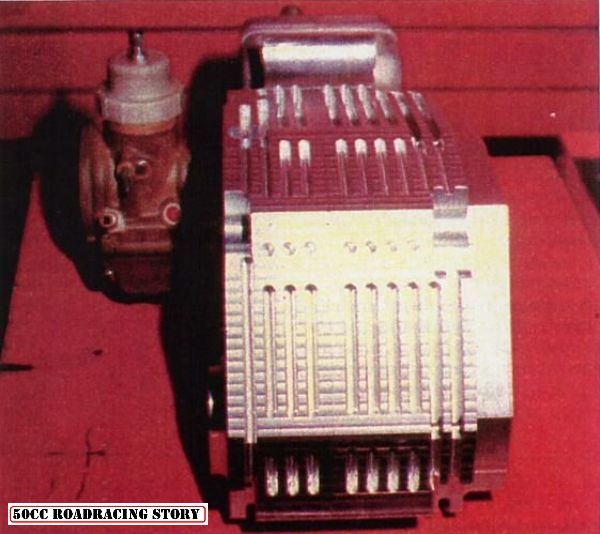 |
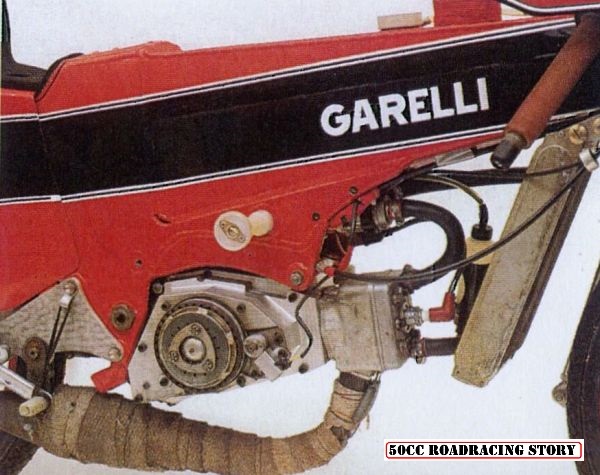 |
|
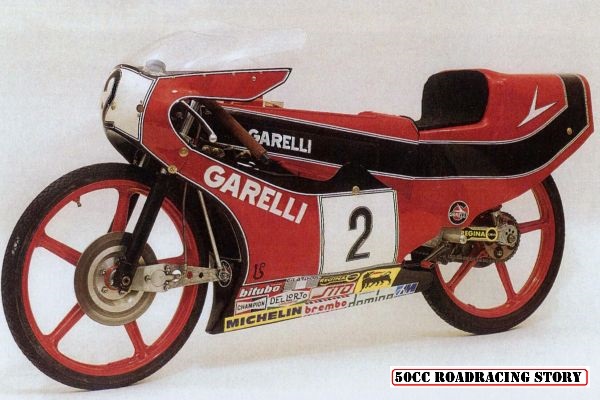 |
|
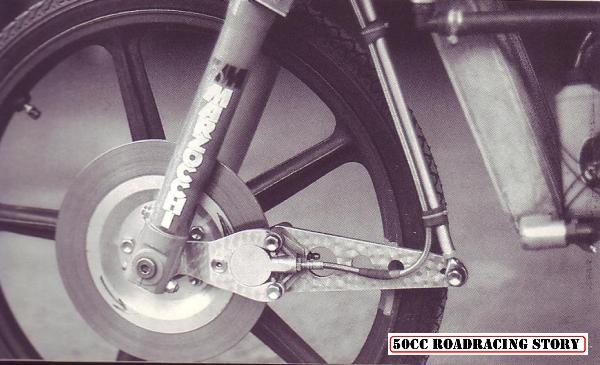 |
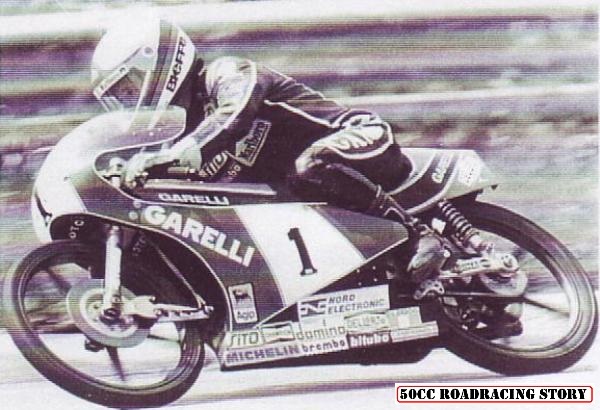 |
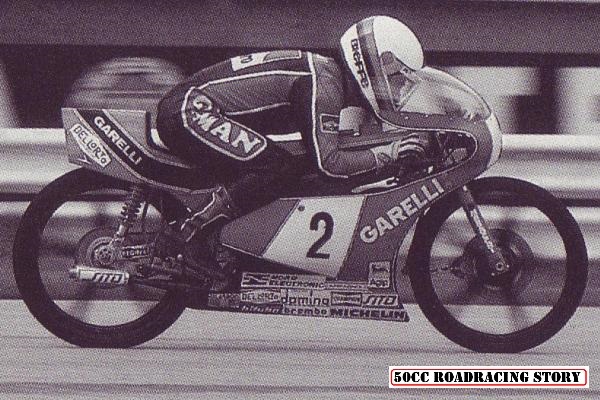 |
1983"Doerflinger won the first race at Le Mans, we had a lot of problems during practice, also with the 125's, a really bad and miserable weekend, but we came in second. The next race was our home GP, at Monza. In practice we had a problem and we had to work until 2.30 in the morning to prepare our bikes. We also welded our friend Doerflinger's swinging arm which had cracked. In the race Doerflinger punctured and we had an easy win. At Hockenheim Doerflinger beat Lazzarini by 0,4 sec. and in Jarama we won without problems." |
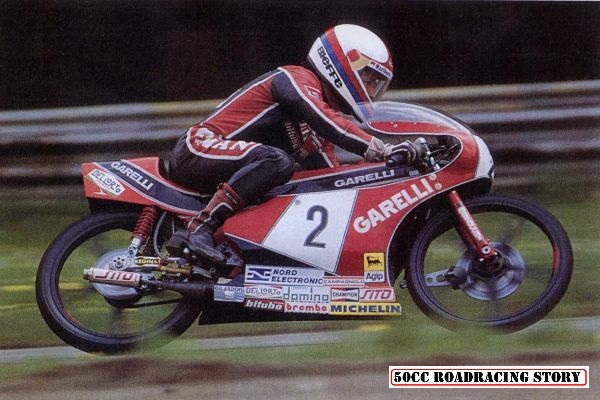 |
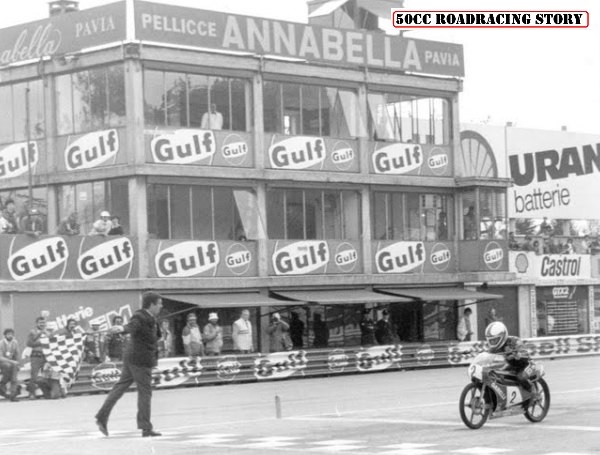 |
| "Then came Yugoslavia. On friday Lazzarini crashed in practice with the 125 and could not race. The only solution to prevent Doerflinger to win the race was to give his bike to someone else,but who would be able to beat him? Tormo, I thought!" |
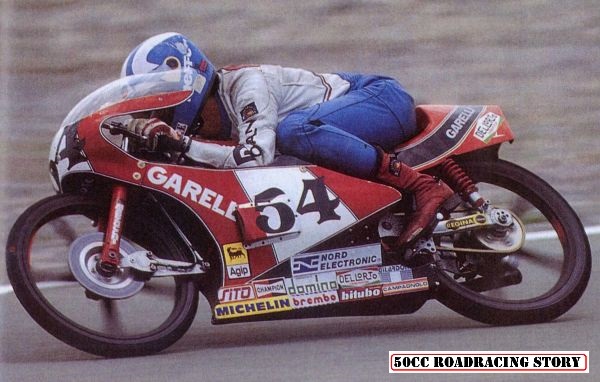 |
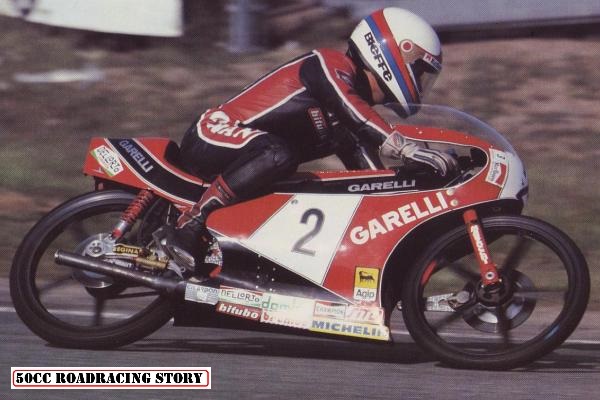 |
"So I went to talk to him and he agreed, he tried the bike on saturday, but said he liked to have the gearchange on the other side. We tried to do this but it proved impossible to do with the limited means we had. So he had to start with the gearchange on the wrong side. In the race he was first with a big advantage on Doerflinger until he retired on the last lap through lack of fuel!" |
 |
"I could not understand this because I had calculated the fuel consumption in the usual way which had never failed. We only discovered the cause when we came back home: a small fuel leak in the chassis/fuel tank had developed during the race, This was a disadvantage of the monocoque construction. Lazzarini made a very fast recovery and was able to ride at Assen, we prepared a second bike for Tormo to try to beat Doer- flinger into third place, but our second engine was not so good as the first one, so he came in third." |
| "Now both Lazzarini and Doerflinger were on equal points, so who won the last race at Imola would be world champion. There were two month's between Assen and Imola, but we also had to go to the 125cc GP's, which were actually the most important." |
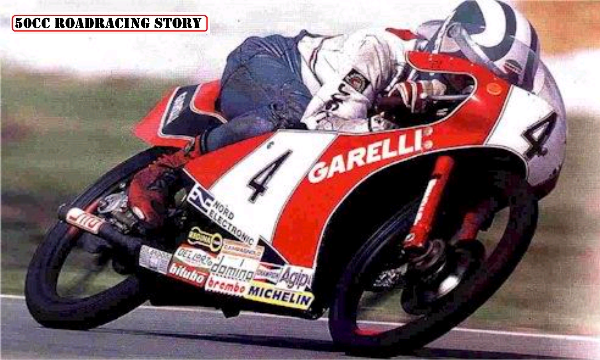 |
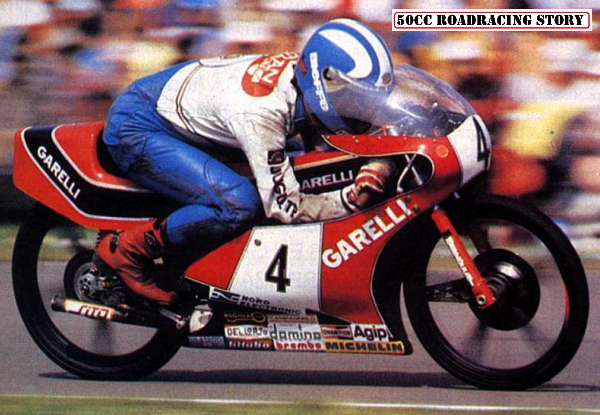 |
"In august the factory closed for two weeks holiday and I remember very well working all alone, for two weeks, trying to make the best engine I could, testing various cilinders, exhaust pipes, carburettors, then changing all the bearings and then testing again with the new bearings so I was absolutely sure I had done everything I could.But Lazzarini crashed in saturday practice, so we had already lost the championship before the race started." |
| "Tormo won the race for us with a very big advantage, he even stopped during the last lap to salute some of his Spanish supporters and still won with a 46 seconds advantage. So that was the last 50cc GP, we won, but it left me very disappointed! It was also Tormo's last GP victory." |
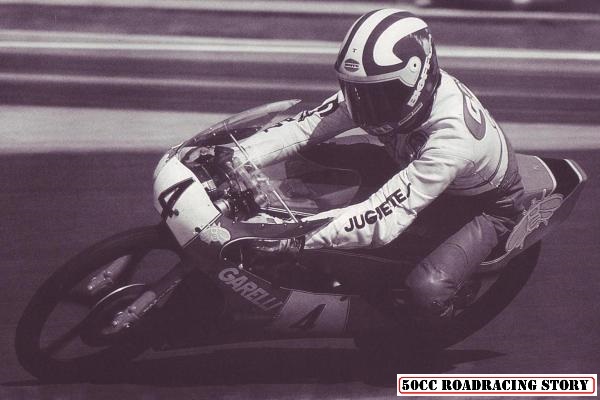 |
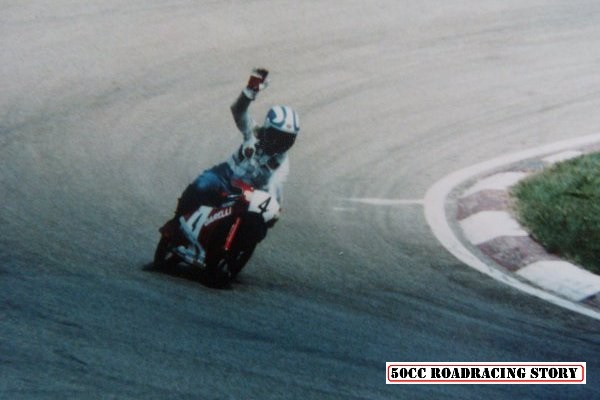 |
|
| "The Garelli 50's last race was at Misano in 1984 when we competed with it in the first 80cc race which Lazzarini won with a new 50cc lap record. We even thought about continuing in the 80cc class with it, we had a crankshaft made with a longer stroke in order to use the 125's cilinder but we never even tested it on the dyno as the Garelli management decided against it. They wanted to make a 250. In its last version the engine had 21.5 HP and we used a 29.5 mm carburettor." Jan Thiel 2009. |
|
| This 50cc Garelli were driven by Claudio Granata in 84 and won the Italian championship in the 80cc class. |
 |
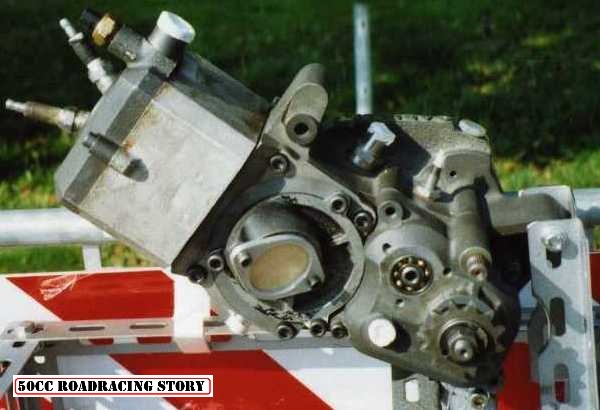 |
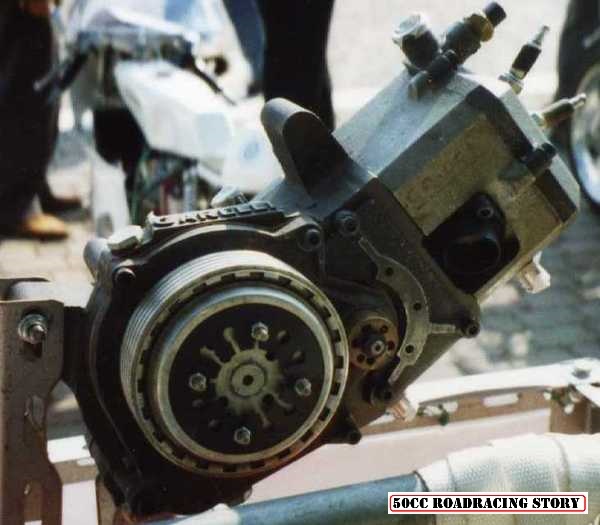 |
Garelli replicas.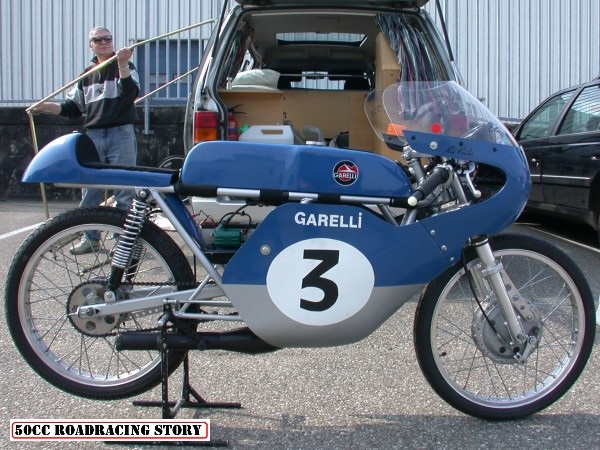 |
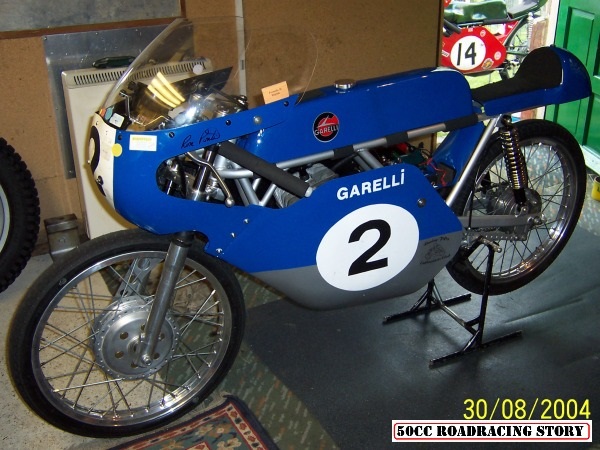 |
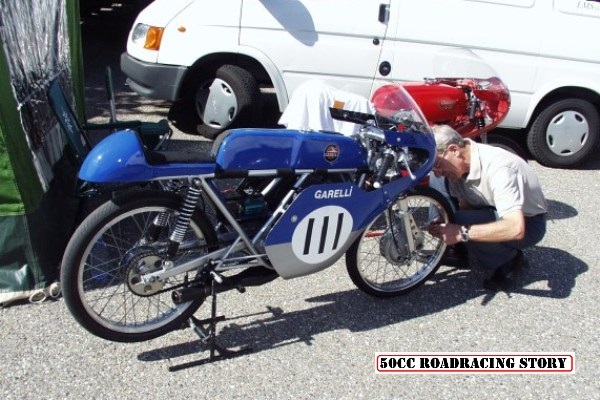 |
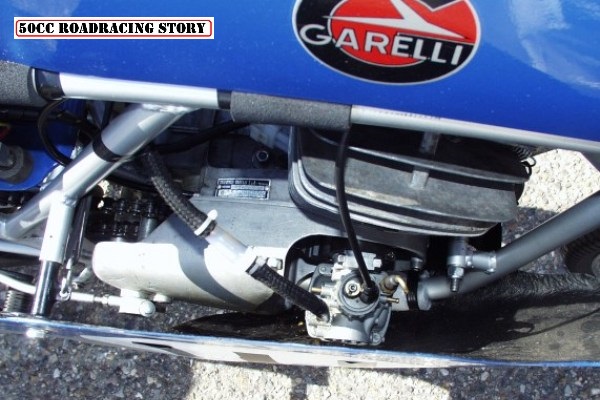 |
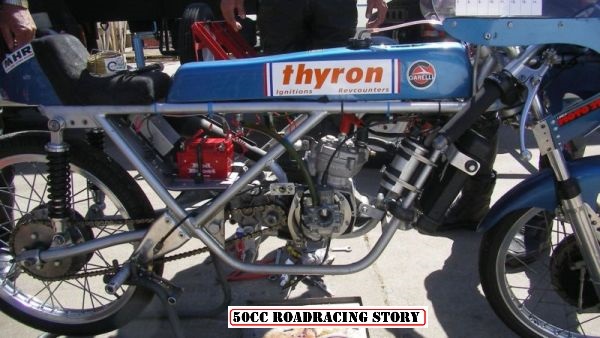 |
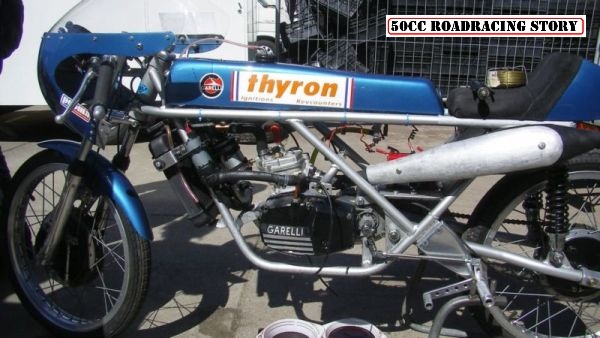 |
 |
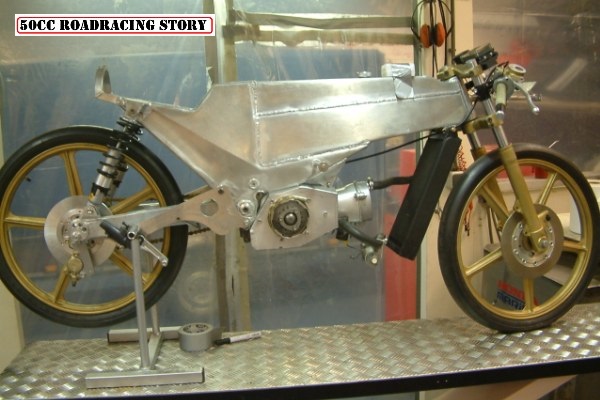 |
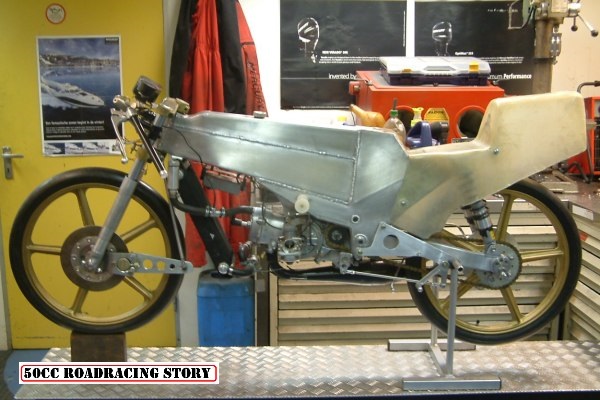 |
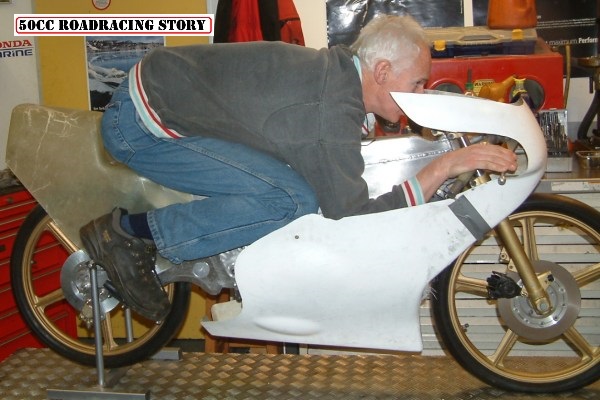 |
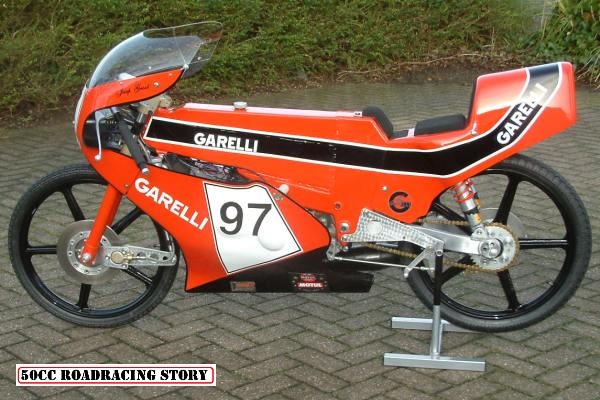 |
 |